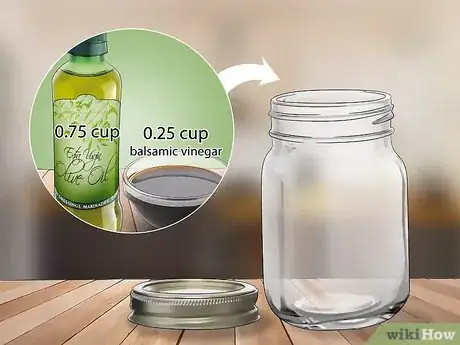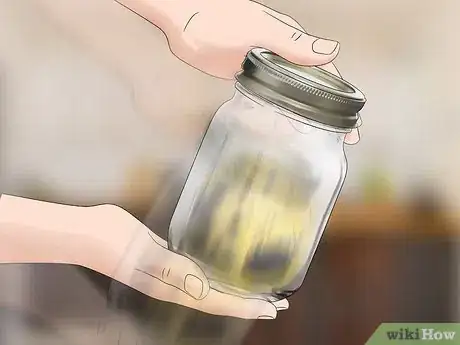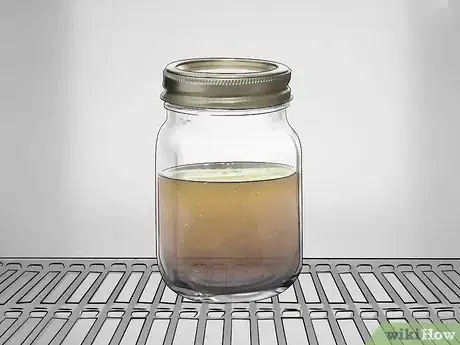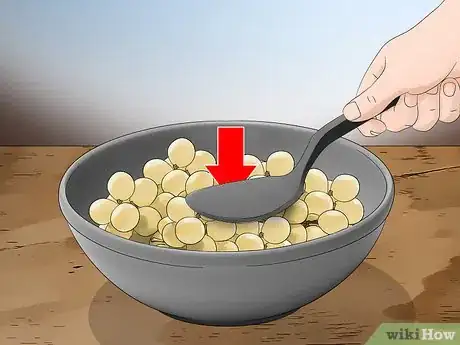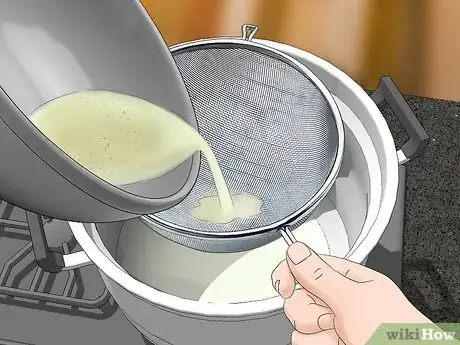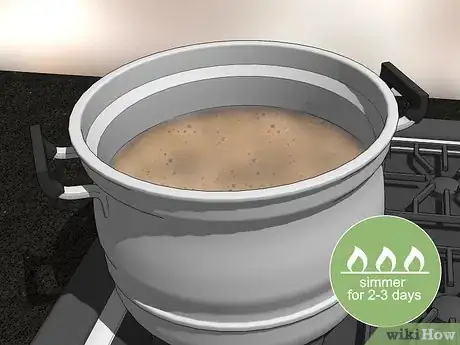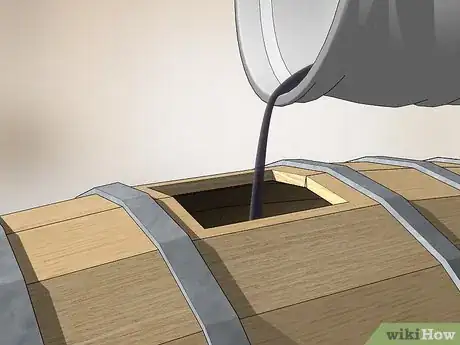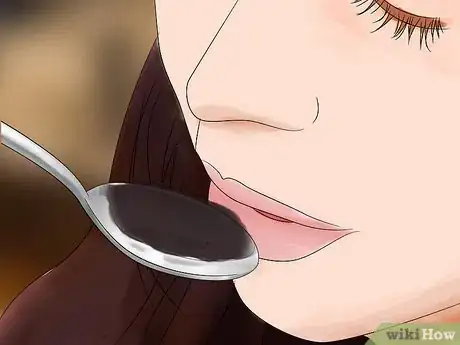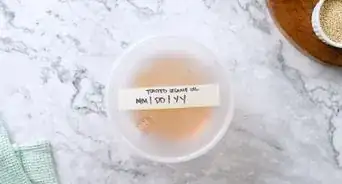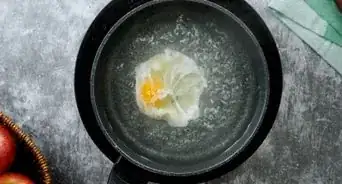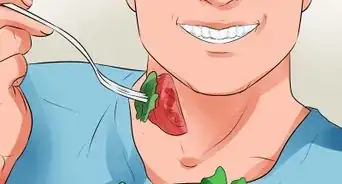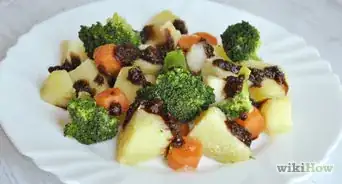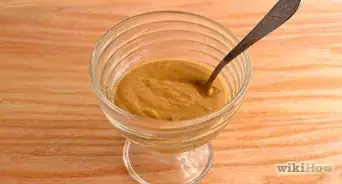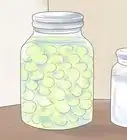This article was co-authored by wikiHow Staff. Our trained team of editors and researchers validate articles for accuracy and comprehensiveness. wikiHow's Content Management Team carefully monitors the work from our editorial staff to ensure that each article is backed by trusted research and meets our high quality standards.
There are 9 references cited in this article, which can be found at the bottom of the page.
This article has been viewed 266,842 times.
Learn more...
Balsamic vinegar is a main ingredient found in balsamic vinaigrette, which is used for things like salads and dipping sauces. Making balsamic vinaigrette is super easy and only takes 4 ingredients and a jar suitable for shaking to complete the process. If you're really dedicated, you can even make your own balsamic vinegar. The entire process takes at least 12 years, but it's a rewarding project if you stick with it.
Ingredients
- 0.75 cups (180 ml) extra virgin olive oil
- 0.25 cups (59 ml) balsamic vinegar
- Salt
- Pepper
- Whole grain mustard (optional)
- Garlic cloves (optional)
- Shallots (optional)
Makes roughly 1 cup (240 ml)
Steps
Making a Balsamic Vinaigrette
-
1Combine extra virgin olive oil with balsamic vinegar. It’s easiest to pour 0.75 cups (180 ml) of olive oil and 0.25 cups (59 ml) of balsamic vinegar directly into a jar with a sealable lid. If you don’t have a sealable jar, pour the olive oil and balsamic vinegar into a small bowl.[1]
- The jar or similar container will be shaken, making it important that the seal is tight and secure.
- If you’re using a bowl, you’ll be whisking the ingredients together instead of shaking them.
-
2Sprinkle 0.25 tsp (1.2 ml) each of salt and pepper into the liquid. If you’d rather not measure out the seasoning exactly, just add a pinch of salt and a couple grinds of black pepper. It’s best to add smaller amounts of salt and pepper at a time, as you can always add more if desired.[2]Advertisement
-
3Add extra flavor to the dressing by adding optional ingredients. Some people like adding 1 tsp (4.9 ml) of whole grain mustard to the dressing, while others also like adding fresh minced garlic or shallots. If you like the taste of any of these ingredients, add a small amount at a time before tasting the dressing.[3]
- Adding mustard helps the vinegar and oil combine more easily.
- Other ingredients you might want to use include Dijon mustard, sugar, honey, strawberries for a strawberry balsamic vinaigrette, or egg yolk to thicken the consistency.
-
4Attach the lid securely and shake the jar to combine the ingredients. Screw the lid onto the jar so that liquid won’t leak through. Shake the jar for 10-15 seconds, helping the ingredients mix together thoroughly. Once the dressing is shaken, it’s ready to be tasted.[4]
- If you poured the ingredients into a bowl, use a whisk to stir everything together thoroughly.
-
5Play around with the olive oil and balsamic vinegar proportions. The most common ratio is 3 parts olive oil to 1 part balsamic vinegar. However, some people like more vinegar in their dressing, while others might want less vinegar. Test the balsamic vinaigrette once it’s been shaken to decide whether you’d like to add any additional ingredients to create the best flavor.[5]
- Consider dipping a piece of lettuce in the dressing to taste it.
-
6Keep the dressing in the fridge for several weeks. If you made the vinaigrette with just olive oil, balsamic vinegar, salt, and pepper, it’s not necessary to keep it in the fridge. However, once you add fresh ingredients it’s best to keep the dressing in the refrigerator to be able to use it for several weeks.[6]
- Keep the jar sealed when it’s stored on the counter or in the fridge.
- If you created the vinaigrette in a bowl, transfer it to a sealable container or place a cloth, foil, or plastic wrap over the bowl.
Creating Balsamic Vinegar
-
1Squeeze fresh grapes to use the juice. Lambrusco or Trebbiano grapes are typically the best type for making balsamic vinegar. Crush the grapes using whatever method you’d like, such as placing them in a bowl and mashing them with a kitchen utensil.[7]
- Keep in mind that this is usually done with many pounds of grapes using a machine that crushes the grapes and eliminates the pulpy parts when balsamic vinegar is made from companies.
- The grape juice resulting from the grapes being crushed is called “must.”
- Wear an apron to prevent grape juice from getting on your clothing.
- A grape press can help with this process.
-
2Strain the crushed grapes to reveal pure juice. Place the squeezed grapes and liquid in a strainer to remove any seeds, pulp, or skin with a bowl under the strainer to catch the liquid. You may need to press down on the crushed grapes to remove any lingering juice, ensuring you remove all the fresh juice that you can.[8]
-
3Simmer the grape juice for 2-3 days in a large pot. Cook the grape juice until the liquid is reduced by a third or a half, causing it to thicken. Cook the juice slowly, bringing it just under a boil. When it’s done, it will have a nice caramel color and a thick consistency.[9]
- Cooking the grapes is important because it kills off bacteria.
- Avoid exceeding 195 °F (91 °C) while it’s boiling.
- Use something such as a large kettle or pot to cook the juice.
-
4Pour the grape juice into a wooden barrel. You may need to use multiple barrels if you squeezed a lot of grapes. Place a cloth on top of the hole in the barrel to help with evaporation.[10]
- These wooden barrels are called “batteria.”
- Small oak casks are especially helpful for making balsamic vinegar.
-
5Store the grape juice in wooden barrels for at least 12 years. While many balsamic vinegar producers let their vinegar age for 25-50 years, the minimum is 12 years. Storing the juice in barrels helps the juice turn into acetic acid.[11]
- The barrels don’t need to stay in an area with a regulated temperature—an attic or similar room is ideal as the temperature fluctuations actually help the vinegar progress.
-
6Transfer the juice to a smaller barrel once a year. Each year that the juice sits in the barrel, it will lose roughly 10% of its volume. It’s important to move the liquid into smaller barrels each time this happens. Having barrels made of different types of wood, such as cherry, oak, and juniper, gives the liquid added taste each time it’s transferred.[12]
- For example, you might have 6 barrels of varying sizes, with each one made of a different wood, such as cherry, ash, acacia, chestnut, juniper, and oak.
- Moving the liquid to a new barrel each time 10% of it evaporates is what gives it a unique flavor, so if you don't have multiple barrels, your balsamic vinegar may not have the best taste possible.
- The size barrels you use will depend on how much liquid (grape juice) you have to begin with.
-
7Continue transferring the liquid until you’re satisfied with its taste. Once the balsamic vinegar has reached the 12 year mark, it’s up to you as to when you decide it’s ready to be used. Taste the balsamic vinegar to see if the consistency, density, and flavor is ideal, and if it isn't ready, transfer it to a smaller barrel so it can continue aging.[13]
- Mass producers of balsamic vinegar must have their vinegar tested by professionals once they believe it’s done before it can be bottled and sold.
Community Q&A
-
QuestionIs there any caramelized sugar in balsamic vinegar?
 Community AnswerYes, but not cane sugar. The sugar comes from the grapes used in the process; the grape juice is reduced to a syrup, which is semi-caramelized. It does not brown into a full caramel. You may also be tasting the flavors added by the wood casks the vinegar sits in as it ages.
Community AnswerYes, but not cane sugar. The sugar comes from the grapes used in the process; the grape juice is reduced to a syrup, which is semi-caramelized. It does not brown into a full caramel. You may also be tasting the flavors added by the wood casks the vinegar sits in as it ages. -
QuestionThe article says to boil the juice but not to exceed 195 degrees. If I boil it, it will go over 210 degrees. Should I boil it or not?
 Community AnswerGenerally, the more viscous the liquid, the lower its boiling point. As the article states that the "mosto" that is formed by this process ends up being a syrupy liquid, it is very possible that its boiling point is below 195 degrees. Either way, it says the mosto will not generate vinegar if you exceed 195 degrees, so don't.
Community AnswerGenerally, the more viscous the liquid, the lower its boiling point. As the article states that the "mosto" that is formed by this process ends up being a syrupy liquid, it is very possible that its boiling point is below 195 degrees. Either way, it says the mosto will not generate vinegar if you exceed 195 degrees, so don't. -
QuestionHow many barrels are needed to age it 25 years?
 Emily Berger1Community AnswerHow many barrels you use will depend on how much balsamic vinegar you're making, not necessarily the amount of years. Fill the largest barrels full of the must first, and then transfer this liquid to roughly 6 other barrels that decrease in size.
Emily Berger1Community AnswerHow many barrels you use will depend on how much balsamic vinegar you're making, not necessarily the amount of years. Fill the largest barrels full of the must first, and then transfer this liquid to roughly 6 other barrels that decrease in size.
Things You'll Need
Making the Vinaigrette
- Jar with lid
- Bowl and whisk (optional)
- Measuring cups
- Foil or plastic wrap (optional)
Creating Balsamic Vinegar
- Barrels of varying sizes
- Large bowl
- Kitchen utensil for mashing grapes
- Large pot
- Strainer
References
- ↑ https://www.thekitchn.com/essential-recipe-balsamic-vinaigrette-139113
- ↑ https://www.elizabethrider.com/homemade-balsamic-vinaigrette-recipe/
- ↑ https://www.elizabethrider.com/homemade-balsamic-vinaigrette-recipe/
- ↑ https://www.thekitchn.com/essential-recipe-balsamic-vinaigrette-139113
- ↑ https://www.elizabethrider.com/homemade-balsamic-vinaigrette-recipe/
- ↑ https://www.thekitchn.com/essential-recipe-balsamic-vinaigrette-139113
- ↑ https://www.youtube.com/watch?v=ycdkhO-QEUU#t=2m
- ↑ https://www.youtube.com/watch?v=ycdkhO-QEUU#t=4m
- ↑ https://www.youtube.com/watch?v=ycdkhO-QEUU#t=3m16s
About This Article
To make balsamic vinegar, start by squeezing several pounds of fresh grapes and collecting the juice. Then, strain out the seeds, pulp, and skin, and simmer the grape juice for 2-3 days in a large pot. Once the juice has reduced by a third or a half, pour it into a wooden barrel and store the barrel somewhere safe for 12 years, which is the minimum amount of time needed for the juice to turn into acetic acid. Every year, transfer the vinegar into a smaller barrel since it will lose 10 percent of its volume each year. To learn how to make balsamic vinaigrette, keep reading!
